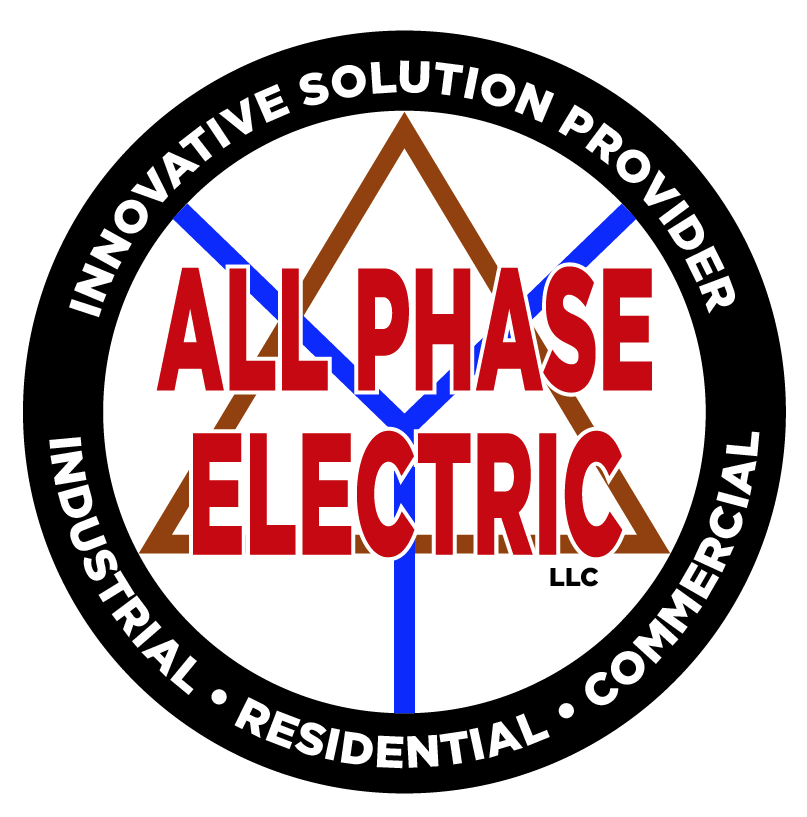Manual or Automatic Generator Transfer Switch
Earlier, we discussed a few electrical remodels that could be performed in the winter. Today, we'll discuss what type of generator transfer switch works best for you.
What Are Generator Transfer Switches?
A generator transfer switch transfers the power coming into your home from grid power (MEA) to the generator power. Typical residential services are 100A or 200A. Most generators only supply up to 30A of power.
They come in three varieties: manual, automatic, and interlock. The manual and interlock versions require a generator cord and an inlet to connect your generator to. The automatic is hardwired to your non-portable generator.
What is an inlet?
The inlet is where you plug your manual generator into.
Have you ever heard of a suicide cord? This is where your extension cord has two male ends. When the one male end is plugged into a power source, the other end is hot and has the potential to electrocute someone or start a fire. To prevent that, legal extension cords have one male and one female end.
A generator cord has the male end that plugs into the generator, making the other end hot or live. The end that plugs into your home is female and therefore needs what we call an inlet, or a recessed, male receptacle.
What Is a Manual Generator Transfer Switch?
The manual transfer switch is exactly what the name implies. You will manually turn the power from normal to off to generator. When the power comes back, you'll turn it from generator to off and then to normal.
What's the process for using your Manual transfer switch?
Step 1: Bring your generator to your transfer switch and inlet location.
Step 2: Turn your transfer switch from the On position to the Off or middle position.
Step 3: Plug the generator using a generator power cord into the inlet.
Step 4: Start your generator.
Step 5: Turn your transfer switch to the secondary On position, which is the lower position.
What Is An Automatic Generator Transfer Switch?
This is the generator set up that many would love to have. The generator is permanently installed to a concrete pad and is hardwired to the transfer switch. It's also hard connected to a fuel source, whether it's a natural gas line, propane tank, or fuel tank.
We only provide the installation of the electrical portion of this installation. The automatic transfer switch (ATS) and all the support components including battery warmers, batteries, and other winter package components will come with your generator. We'll install that, connect the power and controls to your at ATS. If you've had the mechanical or propane contractor install their portion, we'll then invest an hour to make sure your ATS is connected to the WiFi and that it's running correctly.
What's the process for using your automatic transfer switch?
Monthly: Your generator will put itself through monthly tests. It's a good idea to pay attention to this and ensure that they happen. If this doesn't, it's time to call someone to see what's going on.
Power Outage: When normal power drops, your automatic transfer switch will send a signal to your generator to turn on, and then your switch will transfer power to the generator.
Normal Power Restored: When the normal power is restored, your automatic transfer switch will send a signal to your generator to do a slow shut down and then will transfer the power back to the grid.
What Is A Generator interlock Switch?
This is installed on your main breaker.
The generator interlock switch is installed inside your panel either at the house or in the meter, depending. The interlock provided must be specific to the panel manufacturer and the specific panel. Not all homes are capable of having a generator interlock switch as the panels in the home are not configured for the interlock switch to work. The panel must have a main circuit breaker and an opening in the panel for a 30A 2pole breaker.
What's the process for using your generator interlock switch?
Step 1: Bring your generator to your panel and inlet location.
Step 2: Turn your main breaker off.
Step 3: Plug the generator using a generator power cord into the inlet.
Step 4: Start your generator.
Step 5: Slide your generator interlock up or to the side, depending, so that the main circuit breaker is locked in the off position.
Step 6: Turn your generator circuit breaker into the on position.
A few things to be very careful of when dealing with a generator interlock switch.
It is imperative that the normal and generator power never be switched on at the same time. The only thing protecting your home from being doubly fed is the interlock device.
If the breakers begin weakening or do not fully engage, it's time to replace the breaker. They are not designed to be used as switches. Their lifetimes will be shortened if they are used repeatedly.
Conclusion
There are several ways to protect your home or home-based business when it comes to providing generator back-up power. Determine which one you'd prefer and then give us a call to schedule a free quote.
Get The Help You Need
If you would like to have an All Phase Electric certified electrician help you with your upgrades, be sure to give us a call at 907-376-1200, or you can text us at 907-531-4328.
Why choose All Phase Electric for your certified electrician residential electrical upgrades and installs?
Over 134 cumulative years’ experience of residential electrical installations
Up-front pricing. If you text your information and pictures to Patrick at 907-531-4328, he can provide you an estimate over the phone.
Fully trained and insured technicians.
Lifetime guarantee on All Phase Electric installation work.
Contact us today!







